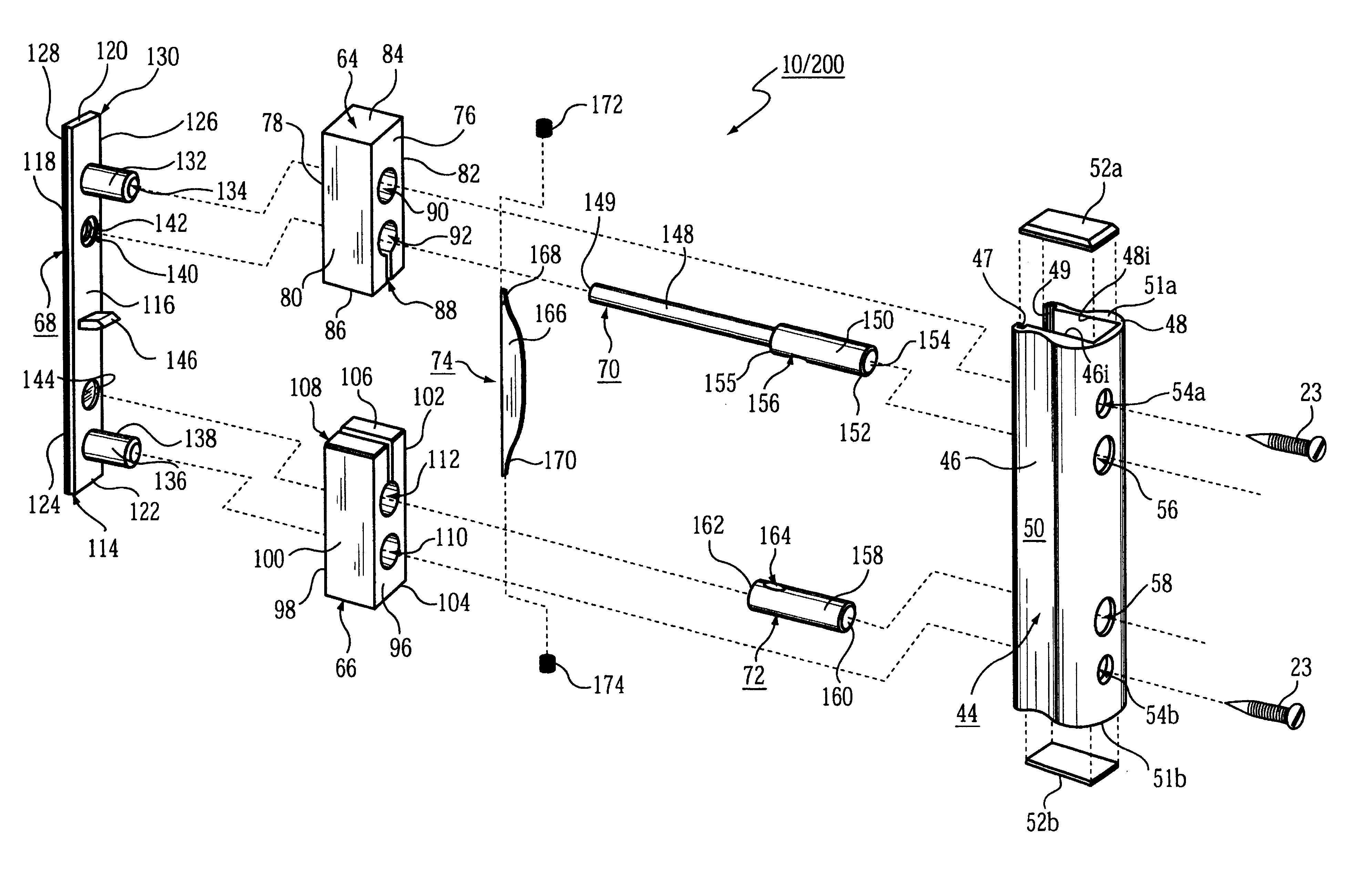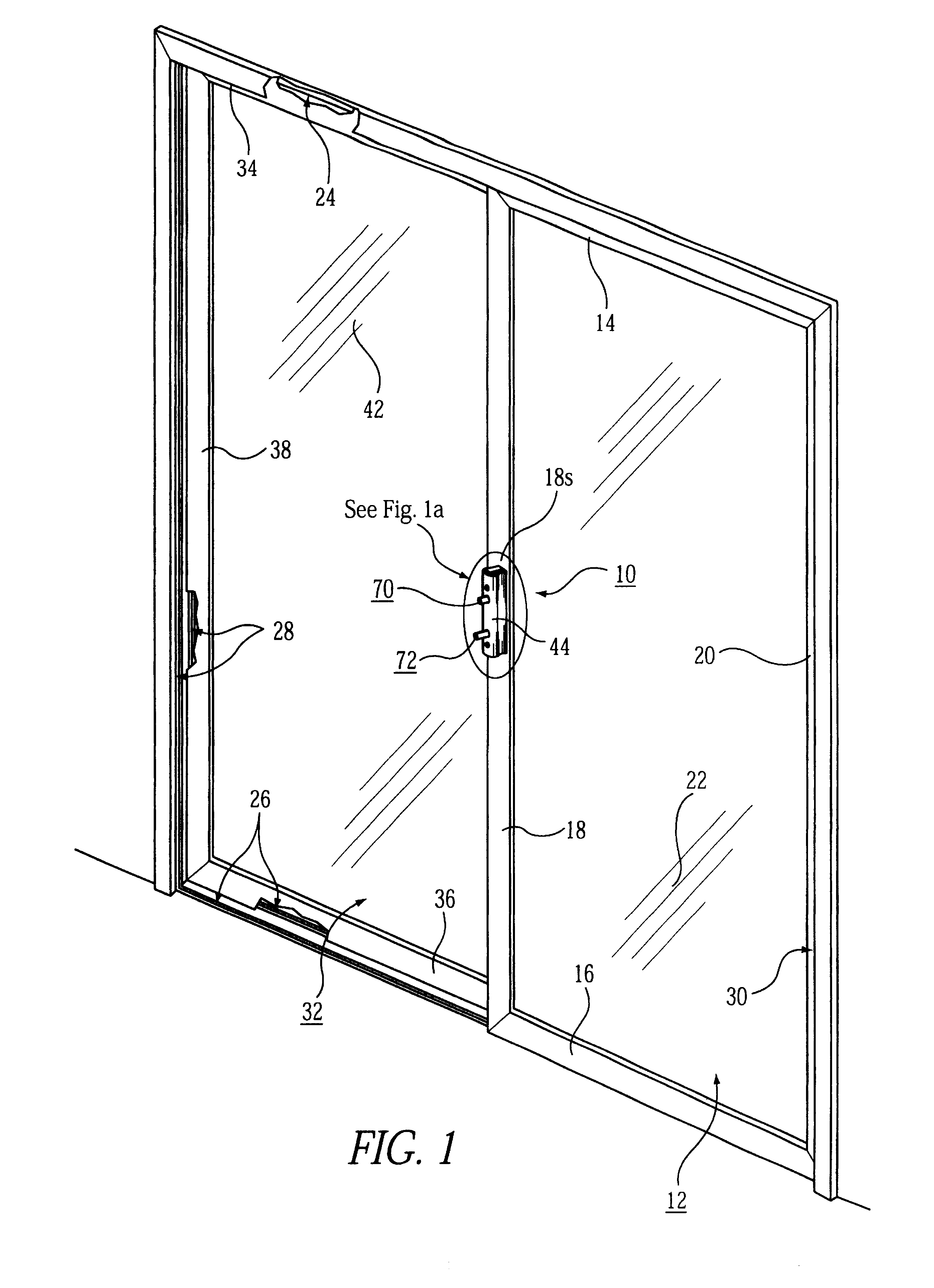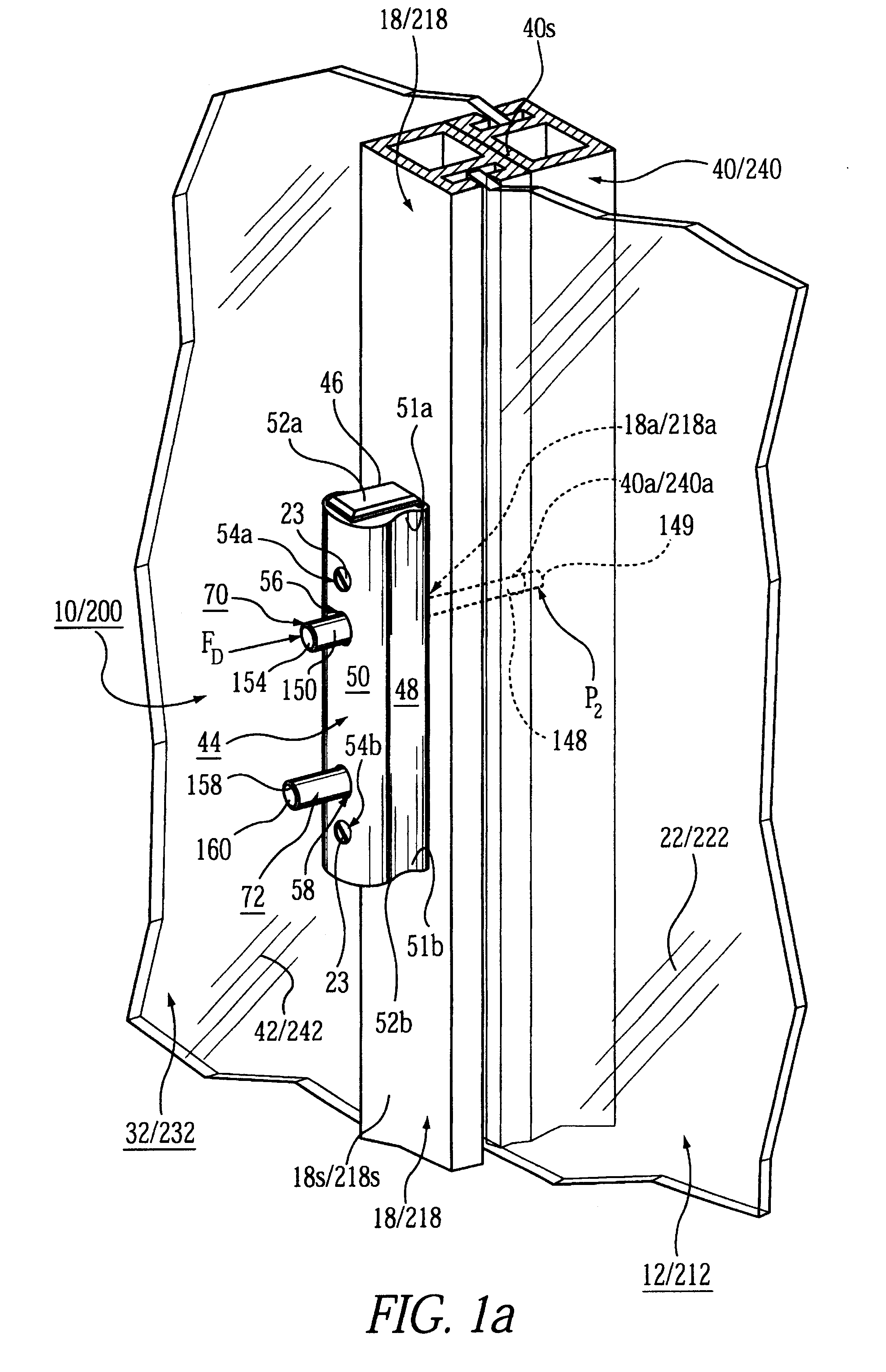Window and sliding glass door having push button locking mechanism
- Summary
- Abstract
- Description
- Claims
- Application Information
AI Technical Summary
Benefits of technology
Problems solved by technology
Method used
Image
Examples
embodiment 10
Preferred Embodiment 10
A sliding door locking mechanism 10 having an integral push button locking assembly 60 is represented in detail by FIGS. 1 through 7 of the patent drawings. The sliding door locking mechanism 10 is used in conjunction with a pair of sliding glass doors / panels 12 and 32 being mounted between upper and lower sliding tracks 24 and 26; and opposing (vertical) side tracks 28 and 30. The first sliding glass panel 12, as shown in FIG. 1, includes an upper rail 14, a lower rail 16, and vertical stiles 18 and 20 for enclosing a glass window 22 therein. The second sliding glass panel 32, as shown in FIG. 1, includes an upper rail 34, a lower rail 36, and vertical stiles 38 and 40 for enclosing a glass window 42 therein. The sliding door locking mechanism 10 is centrally mounted on the inner vertical stile 18 of the first sliding glass panel 12, as shown in FIG. 1a. The outer wall surface 18s of inner vertical stile 18 includes mounting openings 19a and 19b for receiving...
embodiment 200
Alternate Embodiment 200
In an alternate embodiment, a window locking mechanism 200 has an integral push button locking assembly 60 which is represented in detail by FIGS. 1a, 1b, 2, 3, 8 and 9 of the patent drawings. As shown in FIG. 8, the window locking mechanism 200 is used in conjunction with a pair of sliding glass windows 212 and 232 being mounted between upper and lower sliding tracks 224 and 226; and opposing (vertical) side tracks 228 and 230. Alternatively, the windows may move vertically, as shown in FIG. 9, using the window locking mechanism 200. The first sliding glass window panel 212, as shown in FIG. 8, includes an upper rail 214, a lower rail 216, and vertical stiles 218 and 220 for enclosing a glass window 222 therein. The second sliding glass window panel 232, as shown in FIG. 8, includes an upper rail 234, a lower rail 236, and vertical stiles 238 and 240 for enclosing a glass window 242 therein. The sliding window locking mechanism 200 is centrally mounted on th...
PUM
 Login to View More
Login to View More Abstract
Description
Claims
Application Information
 Login to View More
Login to View More - R&D
- Intellectual Property
- Life Sciences
- Materials
- Tech Scout
- Unparalleled Data Quality
- Higher Quality Content
- 60% Fewer Hallucinations
Browse by: Latest US Patents, China's latest patents, Technical Efficacy Thesaurus, Application Domain, Technology Topic, Popular Technical Reports.
© 2025 PatSnap. All rights reserved.Legal|Privacy policy|Modern Slavery Act Transparency Statement|Sitemap|About US| Contact US: help@patsnap.com



